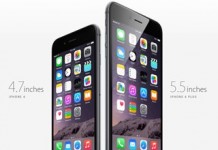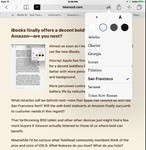![]() That is what The Telegraph is reporting today. According to the article:
That is what The Telegraph is reporting today. According to the article:
“When it comes to embedding accessibility, Apple has set the standard in recent years,” said Robin Spinks, principal manager of digital accessibility at the RNIB. “It is now up to other manufacturers to follow their lead.”
The features cited include the ability to increase the size of text, option to change the color of the screen background and text and the ability to read out the words on the screen.


































Interestingly, accessibility is one reason I’m not buying an iPad. The “ability to increase the size of text” which the RNIB cites (I assume they’re referring to the Zoom feature) only applies to partially sighted people whose eye conditions will allow them to scroll text sideways. My eye condition won’t – my eyes hate motion – and so the Zoom feature isn’t helpful to me in reading text.
While I applaud Apple for adding very large text to their next generation OS, as far as I can tell from reports, the very large text will not apply to Safari. Nor have I found any third-party app browsers that will allow me to read in 28-point type. So the iPad still lacks what every single laptop has: the ability to use a Web browser to read in whatever font size and style you want.
That said, if I ever became completely blind, I’d buy an iPod Touch in a flash, because of its touch-based screenreader and its upcoming support (according to rumors) of braille displays. I really do think that Apple has done a magnificent job on the accessibility front . . . just not good enough for my needs.
I find it odd that Amazon gets panned for not being accessible enough to the blind yet Apple gets plaudits for it, despite the fact that Kindle is arguable superior on this front (having physical buttons that would be easier for a partially sighted person to operate than the all-touch iPad).